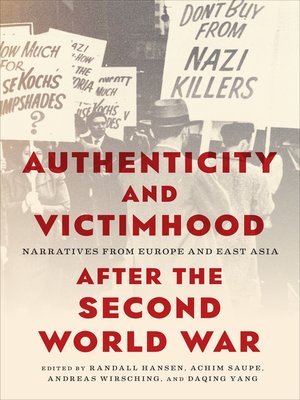Authenticity and Victimhood after the Second World War
ebook ∣ Narratives from Europe and East Asia · German and European Studies
By Randall Hansen

Sign up to save your library
With an OverDrive account, you can save your favorite libraries for at-a-glance information about availability. Find out more about OverDrive accounts.
Find this title in Libby, the library reading app by OverDrive.



Search for a digital library with this title
Title found at these libraries:
| Library Name | Distance |
|---|---|
| Loading... |
The Second World War was filled with many terrible crimes, such as genocide, forced migration and labour, human-made famine, forced sterilizations, and dispossession, that occurred on an unprecedented scale. Authenticity and Victimhood after the Second World War examines victim groups constructed in the twentieth century in the aftermath of these experiences. The collection explores the concept of authenticity through an examination of victims' histories and the construction of victimhood in Europe and East Asia. Chapters consider how notions of historical authenticity influence the self-identification and public recognition of a given social group, the tensions arising from individual and group experiences of victimhood, and the resulting, sometimes divergent, interpretation of historical events.
Drawing from case studies on topics including the Holocaust, the siege of Leningrad, American air raids on Japan, and forced migrations from Eastern Europe, Authenticity and Victimhood after the Second World War demonstrates the trend towards a victim-centred collective memory as well as the interplay of memory politics and public commemorative culture.







